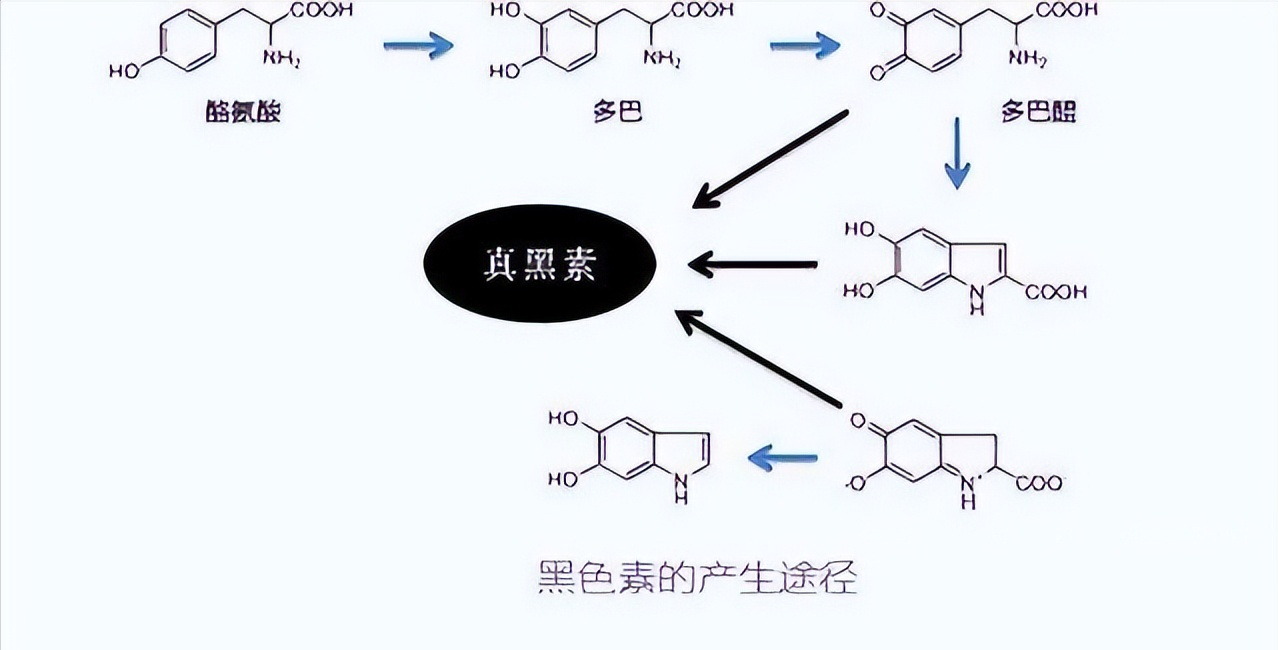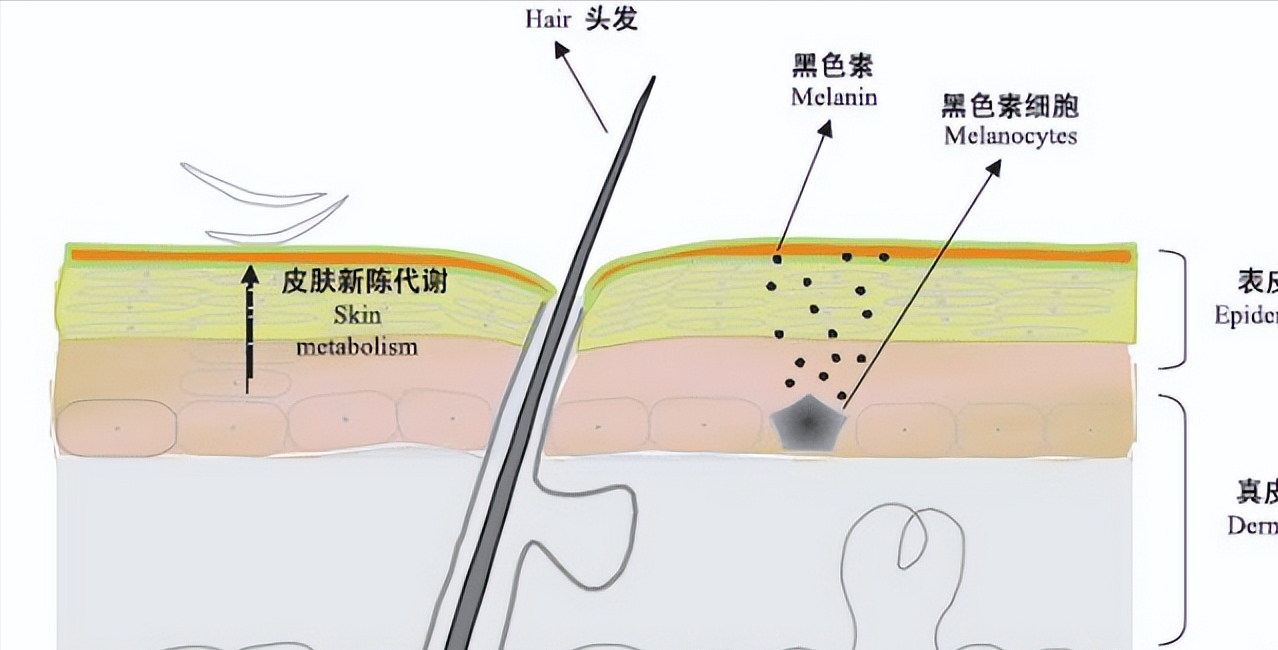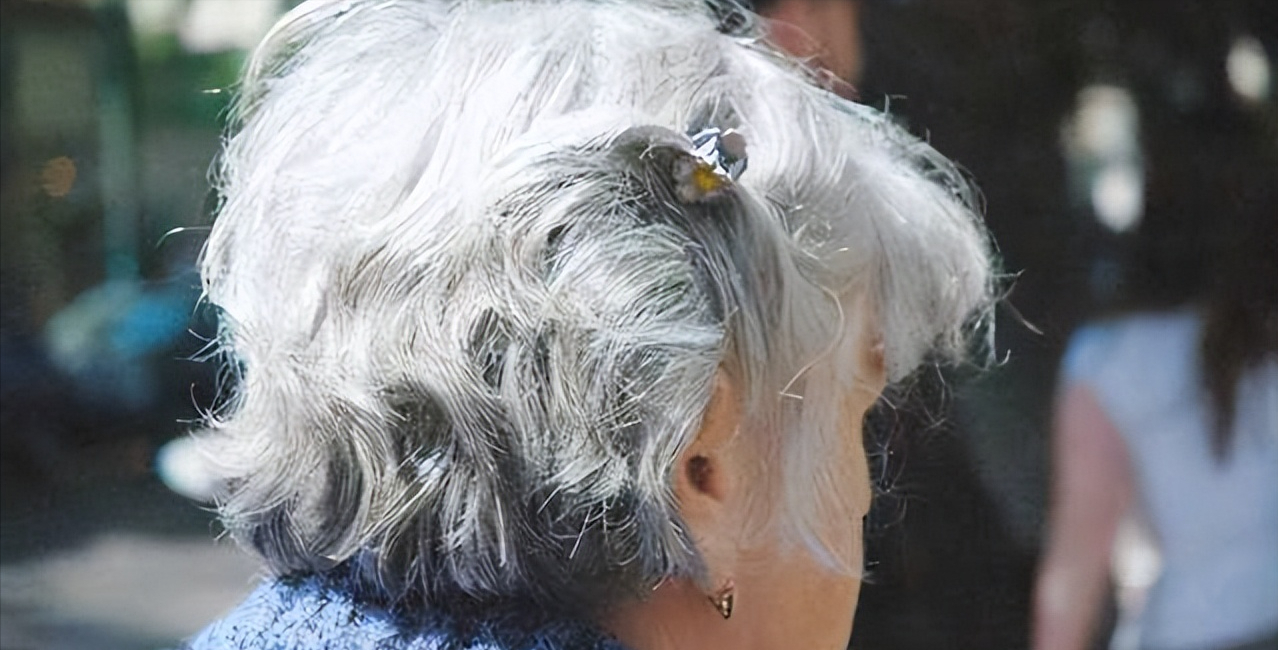
分享科學知識,傳播健康理念
What factors can cause gray hair? How to deal with it?
Recently, Mr. Wang, who is in his early 50s, has been worried. He always feels that he is still young, but he has a full head of white hair, and even his eyebrows have a tendency to gradually turn white.
Many friends of the same age as Mr. Wang have dark and lush hair, except for himself, who looks like he is a dozen years older than them. I talked to my friend about my troubles, but my friend said that the reason why Mr. Wang has so much gray hair is because of a lack of vitamins.
This makes Mr. Wang very puzzled. He is not a picky eater at ordinary times, and he pays attention to the combination of meat and vegetables. How can he still lack vitamins? And, is vitamin deficiency really the real reason for your gray hair?
With the increase of age, the graying of hair seems to be a natural law, but the natural law often fails. Some people have blue hair on their heads in their 50s and 60s, and some people have white hair in their twenties. What is the problem?
Why do people grow white hair? Is it a lack of vitamins?
Hair color is actually related to genes and pigments in the body. Most Asians have black hair because hair color depends on the ratio between eumelanin (brown/melanin) and phaeomelanin (red/yellow) in the body, and Asians have higher levels of eumelanin in the body (about 98%), the hair will appear black.

Why did the hair gradually change from black to white? This has to do with melanin in the body. Melanin is a biological pigment, which is found in everyone. Hair darkening, skin spots or tanning are all related to melanin.
Hair growth is "squeezed" out of the hair follicle, and the dermal papilla at the bottom of the hair follicle can produce melanin. Once the pigment disappears, the color of the hair will change.
During the 20-25 years of age in the human body, it is an active period for the deposition of melanocytes, which exist among the cells in the basal layer of the skin. Melanocytes are produced by a substance called melanoblasts, which are the original substances of melanin.

With the gradual aging of the body, the internal metabolic capacity of the body decreases, and the function of synthetic cells gradually weakens. When the activity of melanocytes decreases, the amount of melanin synthesized will also gradually decrease. And the ability of hair follicles and hair bulbs to absorb melanin is also reduced, which can cause hair to grow without enough melanin and eventually grow gray.
And young people with gray hair may also be genetically related. Young people with long gray hair are often referred to as "less gray heads". According to a variety of medical studies, there are 30% to 70% less whiteheads, and there is a family genetic tendency.

In animal experiments, mutations in tyrosine-related protein genes can lead to graying of mouse hair, so it is speculated that human tyrosine-related protein genes may be related to less white heads.
I believe that everyone has heard the story of "white hair overnight", and psychological factors are also one of the reasons why people grow gray hair. A certain degree of psychological stimulation can make the body in a state of tension, thereby producing a stress response, triggering a severe and lasting neuroendocrine disorder, which in turn leads to an increase in the secretion of catecholamines in the body, causing peripheral vasoconstriction and microcirculation disorders.
In a long-term stress state, the activity of adrenaline in plasma will increase, and platelets will also be activated, increasing blood viscosity and aggravating microcirculation disorders.
The combined result of a variety of factors will cause obstacles to the microcirculation supplying nutrients to the scalp dermal papilla and damage the function of dermal papilla melanin cells, thereby destroying the normal synthesis of dermal papilla melanin and eventually causing hair to turn white.
In addition, vitamin deficiencies can also lead to increased white hair. Deficiencies of some micronutrients, such as ferritin, vitamin D, vitamin B12, folic acid, and selenium, are associated with the loss of hair pigment, and these micronutrient deficiencies may contribute to the appearance of gray hair.
Vitamin B12 and folic acid are essential nutrients for healthy hair. Vitamin B12 has physiological functions such as promoting body metabolism and red blood cell development and maturation, and it can also improve the utilization rate of folic acid, which has important physiological significance.
When the human body is deficient in vitamin B12 and folic acid, it will affect the normal metabolism of hair, nails and skin, resulting in the blockage of melanin production, which will cause people to grow white hair.
Generally speaking, the main reason for the lack of vitamins in the body is the decrease or obstacle of gastrointestinal absorption capacity. When digestion and absorption is poor or gastrointestinal diseases are present, the ability to absorb nutrients is also reduced. For example, the absorption of vitamin B12 requires the help of intrinsic factors produced by cells, while the absorption of folic acid requires the help of folate-binding protein in the intestine.
Therefore, people with poor gastrointestinal function have a higher risk of malnutrition than normal people, and their hair may turn white earlier. (Reference for the above content: If your hair turns white early, it may be your nutrition problem)

After many people grow white hair, they want to cover the white hair by dyeing their hair, but recently there are rumors that dyeing black hair is more likely to cause cancer. Is this true?
Does dyeing black hair cause cancer?
The phenomenon of premature gray hair in middle-aged people seems to be relatively common at present. Many people want to dye black after they grow gray hair, but many reports on "hair dyes cause cancer" have discouraged many people. So, do hair dyes really cause cancer?
To find out whether hair dye is harmful to the human body, we must first understand the principle of hair dye and its ingredients. At present, the hair dyes on the market are mainly divided into oxidative hair dyes (that is, permanent hair dyes), direct hair dyes (semi-permanent or temporary) and natural hair dyes. Most barber shops use oxidative hair dyes. The color lasts 1-3 months.
The main components of oxidative hair dyes are dye intermediates (p-phenylenediamines, aminophenols), coupling agents (phenols, amines) and oxidants (hydrogen peroxide and sodium perborate).
People often say that hair dyes are harmful to the human body, mainly because the hair dyes contain ammonia (NH3·H2O), p-phenylenediamines, aminophenols, nitrobenzene, aniline and other chemical substances. Through skin contact, scalp penetration and other effects, it will cause certain damage to human health, such as skin allergies, hair damage, hair loss, liver and kidney damage, etc., and may even cause leukemia in severe cases.
On September 2, 2020, the British Medical Journal (BMJ), one of the world's leading medical journals, published an article examining the relationship between the use of permanent hair dye and cancer risk and mortality. Permanent hair dyes are associated with an increased risk of skin basal cell carcinoma, breast cancer, ovarian cancer, and lymphoma, suggesting that hair dyes are not an alarmist.
And the study showed that women who used natural dark hair dye had a 289 percent increased risk of developing Hodgkin lymphoma. This may be due to the higher content of p-phenylenediamines in dark hair dyes such as black.
The p-phenylenediamine chemical substance contained in hair dye is an internationally recognized carcinogen. The hair dye not only directly contacts the scalp, but also heats during the process of dyeing, which invisibly accelerates the chemical substances to enter the capillaries through the scalp, and then reach the bone marrow with the blood circulation, which damages human health.
Everyone has a love for beauty, and dyeing black hair can really improve people's spiritual outlook and make people look younger.
However, for your own health, it is recommended to reduce the frequency of hair dyeing. Generally, hair dyeing within 2 times a year will not cause too much damage to the body, and the harmful substances in hair dyes will also have time to be excreted with metabolism. (Refer to the above content: Are hair dyes harmful to the body?)
So, in addition to dyeing your hair, what should you do after growing white hair? What can you do in your life to prevent gray hair?
How to deal with gray hair?
Black and shiny hair is a symbol of youth and health. Modern medical research shows that the condition of hair is closely related to people's diet. If you are malnourished, your hair will lose its luster and gradually become withered, whitened, sparse and even bald early; on the contrary, if you pay attention to nutrition and scientific diet, you can help people have black hair and reflect the vitality of life.
Eating more high-protein foods in your daily diet will help your hair grow healthily. The basic component of hair is keratin, which accounts for more than 90% of hair quality. The need for keratin for hair growth can only be guaranteed if people consume enough protein.
Lamb and beef are rich in high-quality protein. In addition, fish and shrimp, eggs, milk and other dairy products, soy products and other foods are rich in protein.
Protein can only be fully utilized when stomach acid is functioning normally. Therefore, after eating protein foods, people eat some sour foods, which can promote the digestion of protein by gastric acid, make the human body produce keratin, and ensure the healthy growth of hair.

As mentioned above, lack of vitamins will cause premature graying of hair, so pay attention to supplementing vitamins in your daily diet to help hair health. When the diet lacks trace elements such as folic acid and vitamin B12, the hair will turn from black to gray.
Therefore, people should take foods rich in B vitamins in moderation, such as animal liver, fish, egg yolk, nuts, etc. Eating more fresh vegetables and fruits rich in vitamin C will help the deacidification substances in protein play a role, making the hair black and shiny.
In addition, vitamin E has the magical effect of preventing and treating gray hair. Foods rich in vitamin E include vegetable oil, egg yolk, sesame, soybean, etc.
Editor's suggestion
The occurrence of gray hair may be related to heredity, natural aging, lack of B vitamins, and psychological factors. If you have gray hair when you are young, you can go to the hospital to check the content of trace elements in your body to determine whether your gray hair is Caused by vitamin deficiency.
In addition, if you really feel that white hair affects your mental outlook, you can also choose to dye your hair. As long as you control the frequency of dyeing your hair, it will basically not cause too much damage to your body.
Dear viewers, what do you think after watching this? The comment area looks forward to your message.
Subscribe to me for something different every week!
Like my work?
Don't forget to support or like, so I know you are with me..
Comment…